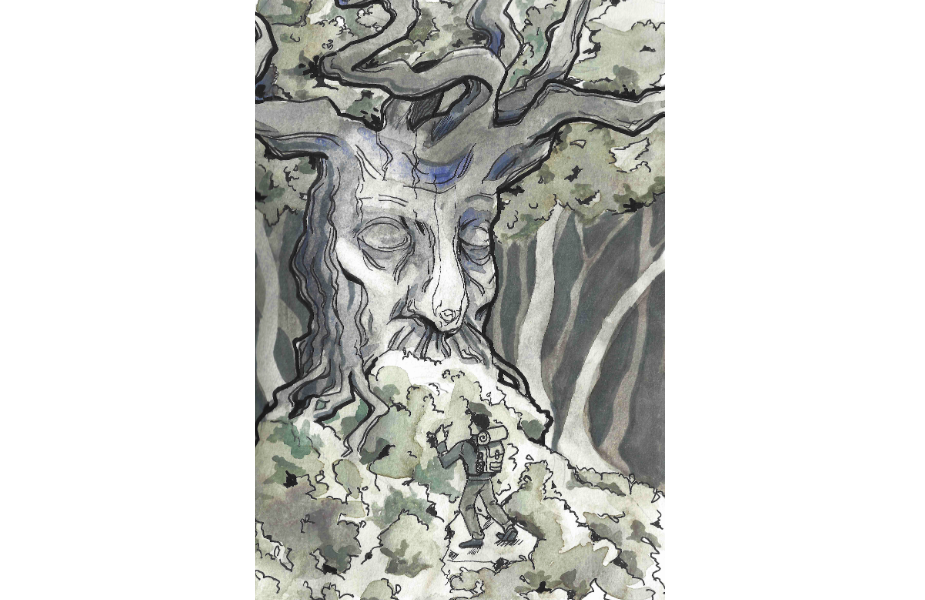Animals are not the only organisms capable of communication: Plants, too, are remarkably adept at exchanging information and sharing resources. By releasing volatile organic compounds (VOCs) into the air or secreting chemicals into the soil, plants can communicate with one another, transport water and nutrients to nearby companions, protect themselves against predators, and even invoke ripening in other plants.
Mother trees and forest networks
In towering forests filled with thousands of species, it may seem that all trees are constantly competing with one another in a quest for sunlight and water. A growing body of scientific research, however, demonstrates that trees live communally and form alliances, exchanging water and nutrients, sending distress signals, and altering behaviour accordingly, thanks to a magical fungal network endearingly referred to as the ‘wood-wide web.’
These fungal extensions of the root system, called mycorrhizal networks, allow for the transfer of water, nutrients, minerals, and even alarm signals between plants. In return, plants provide the fungi with a carbohydrate diet. Young trees often rely on this network, as their larger mother trees pump water and nutrients into their root systems, a phenomenon that German forester and author Peter Wohlleben describes as ‘suckling their young.’ Mother trees are the largest plants in the forest, with the deepest roots and the most fungal connections, so they can afford to distribute their heavy supply of water and sugars to surrounding younger trees.
Allelopathy and competition
Some species have developed a type of chemical warfare called allelopathy to claim territory and force other plants off their land. By releasing toxic compounds known as allelochemicals, plants can inhibit the growth and development of competitors. Many invasive species can successfully take over a foreign environment using this technique. Originating from South America, the water hyacinth has invaded every continent except Antarctica thanks to its ability to chemically suppress its competition.
Allelopathic plants can also benefit agriculture. In companion cropping, allelopathic plants are planted next to crop plants to suppress the growth of certain weeds, allowing the crop plants to thrive. Basil, for example, can act as a natural pesticide and has been shown to help tomatoes overcome disease and improve growth rate.
Plants can also react to competition with their own chemical responses. After an animal eats a leaf, some plant species might produce defensive chemicals to repel pests or send signals to warn their roots or other leaves. Others signal nearby plants or even animals for help. The coyote tobacco plant, for example, deals with caterpillar predation by sending distress signals to insects that eat the caterpillars, thus ridding the plant of its pesky predator.
Species recognition
Plants can detect when other plants are around them, which is important when it comes to competing for resources, knowing when there’s not enough sunlight, and sensing danger. Furthermore, research shows that plants, like animals, recognize their relatives and preferentially help them survive, a phenomenon known as kin recognition. Although kin recognition is still understudied in the plant world, there are varied examples of it at work. A 2017 study showed that the roots of soybean plants avoid less related neighbours’ roots, while those of more related plants grow closer together. In the wild, parasitic plants that depend on their host for their survival have evolved ways of sensing where their host species are, which can be a matter of life of death for the parasite.
Fruit ripening
A plant hormone known as ethylene is essential for the ripening of fruits such as tomatoes, peaches, apples, and bananas. As these fruits develop, they produce greater amounts of ethylene, which then evokes a ripening response. This forms an amplifying feedback loop: As fruits produce ethylene in increasing quantities, they become riper, causing them to produce more ethylene. This process explains why putting a ripe apple next to a banana in your lunch box results in a brown banana later that day—it was all because of plant communication.










Thank you for this. I was aware of a supposed communication channel developed between a lover of tomatoe plants and the tomatoe plants. Regardless, your observations make good sense.
Rick
I love your plants.